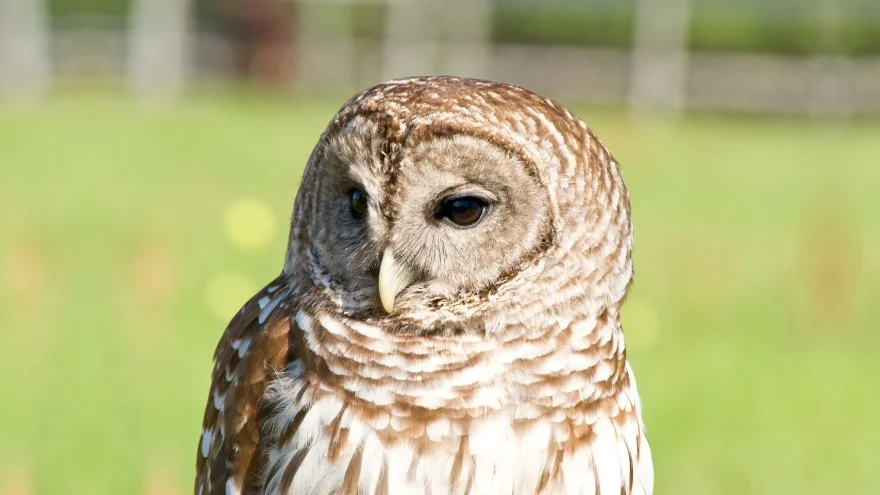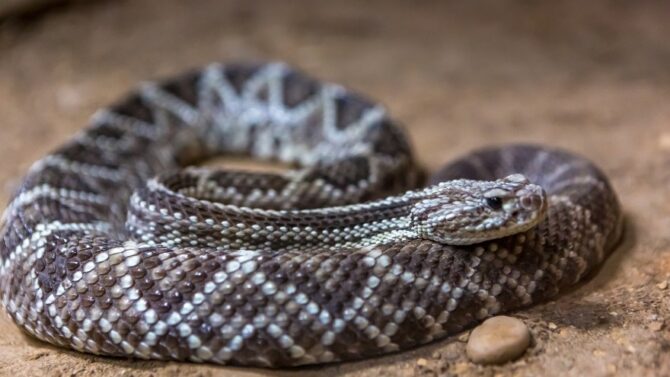Illinois is found in the Midwestern United States, and this is where the famous Chicago city can be found.
The state borders Indiana in the east and the Mississippi river in the north. Illinois goes by the nickname “The prairie state”, and this state boasts of an abundance of wildlife, which includes our subject animal.
You can visit there to see owls, especially during the winter when they flock in.
There are 11 species of owls in Illinois, some of which are easier to see than others. They include the snowy owl, eastern screech owl, barred owl, great horned owl, and barn owl, among others.
Read on to learn the interesting facts about these birds, including how to recognize the different species based on their appearance, sounds, and migratory patterns.
The 11 Species of Owls in Illinois
1. Eastern Screech Owl

- Length: 6 to 10 inches
- Weight: 4 to 9 pounds
- Wingspan: 19 to 24 inches
- Scientific name: Megascops asio
The eastern screech owl is often found in the eastern side of North America, both in Mexico and Canada.
Of course, it being on this list means it also lives in the United States. In Illinois, this species often resides in areas with a lot of trees.
It also stays in residential areas, though it can be challenging to detect because of its nocturnal nature.
When you’re on the lookout for the eastern screech, listen for its sound during the night. Contrary to its name, the eastern screech owl doesn’t screech.
Its sound is more like that of a horse and is very loud. It is often vocal throughout the night, especially during the breeding season.
The eastern screech owl has plumage that’s well patterned and comes with a rusty or dark grey color.
You’d also recognize it by its stocky frame, broad wings, and short tail. Completing the physical look is a round head, yellow eyes, and visible ear tufts.
Similar to other owls we’ll see on this list, the eastern screech is a carnivore.
It feeds on insects (during breeding season), crayfish, snails, spiders, and many other small animals. This bird is an opportunistic predator.
2. Barred Owl
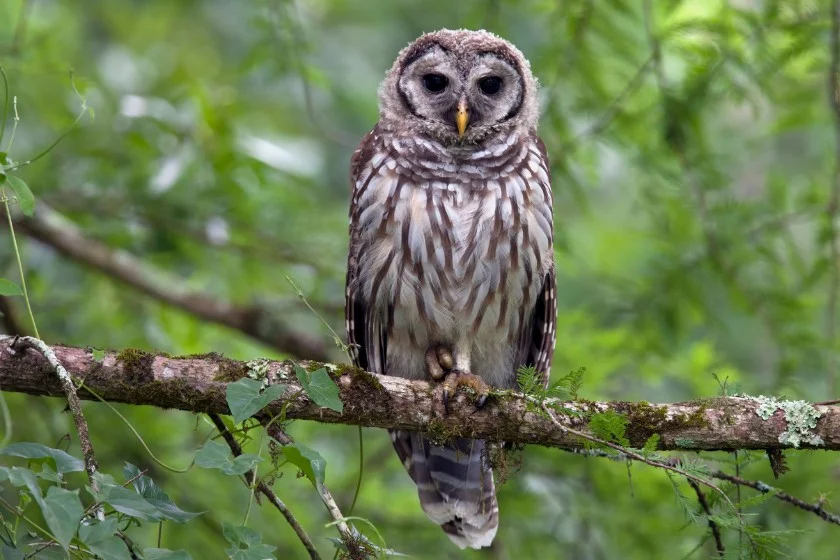
- Length: 17 to 20 inches
- Weight: 16 to 37 pounds
- Wingspan: 39 to 43 inches
- Scientific name: Strix varia
The barred owl is also called the striped owl, the northern barred owl, and the hoot owl on some occasions.
It is a native of North America, and in the United States, it is spread across different states.
In Illinois, it is one of the most common owl species, often inhabiting mature forests and open woodlands.
The most distinctive feature of the barred owl is the white bars on the mantle and back, from which the bird gets its name.
Its overall color is a greyish brown or brown, and it has a wise look because of its eyes.
The barred owl is a hooter, and its sound can be quite loud. The mnemonic device used to remember the hooting of the barred owl is “who cooks for you?”
It also has a couple of other sounds, like the mumble, but the hooting is the best way to know where the barred owl is.
This bird is nocturnal, becoming active right before sunset. However, it can sometimes be found in the morning.
It is an opportunistic hunter that feeds on birds, amphibians, reptiles, and fish.
3. Great Horned Owl
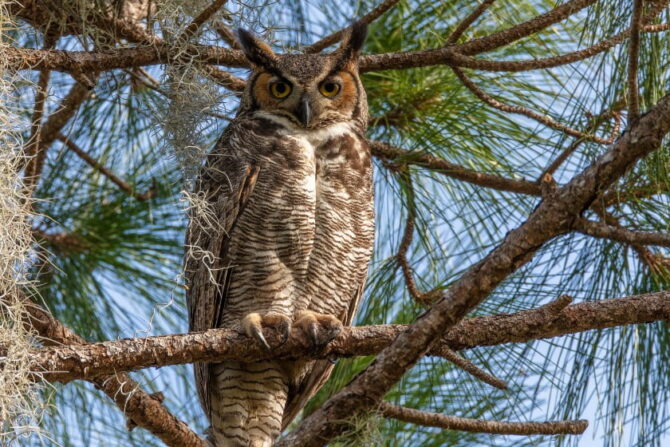
- Length: 18 to 25 inches
- Weight: 32 to 88 pounds
- Wingspan: 40 to 57 inches
- Scientific name: Bubo virginianus
The great horned owl is the most widespread true owl in the United States, and it is quite large.1
It quickly adapts to different habitats like tropical rainforests, deserts, tundras, mangrove swamps, and even urban areas.
The great horned owl is also called the hoot owl, just like its fellow hooter, the barred owl. A third name it goes by is the tiger owl.
In Illinois, the great horned owl is a permanent resident. This means you can find it throughout the year.
The only challenge you will face in locating it is the camouflage habit. It is colored a mottled brown at the top side and a lighter brown below. This helps it blend well into trees.
You can locate it through hoot. The major difference between its hoot and that of the barred owl is that the latter has a louder sound.
When you see one, you should immediately recognize it because it looks like the stereotypical owl. It comes with yellow eyes, long ear tufts, and feathered legs. It also has a white streak on the throat.
The great horned owl feeds on mammals, reptiles, amphibians, and anything it can get its claws on. It is an opportunistic predator.
4. Barn Owl
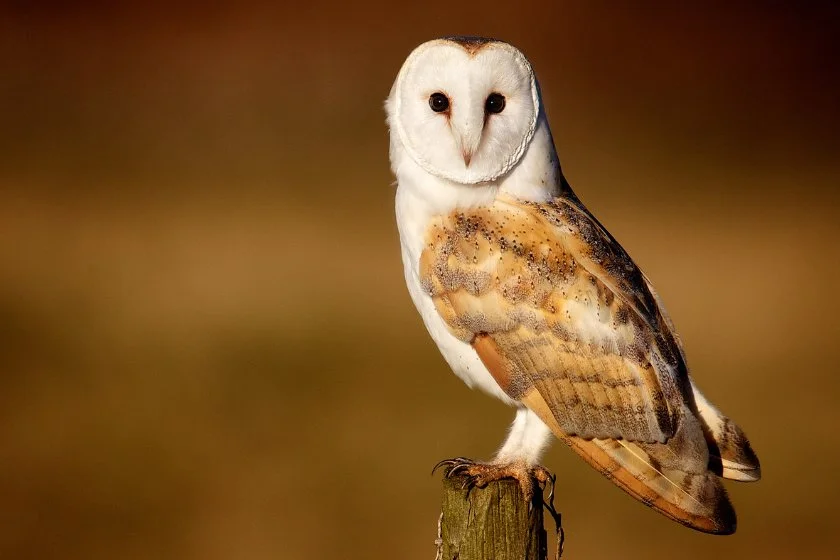
- Length: 13 to 16 inches
- Weight: 14 to 25 pounds
- Wingspan: 40 to 50 inches
- Scientific name: Tyto Alba
The barn owl is the most widespread in the world and also one of the most widespread birds there is.
Its range is vast, only excluding places like polar regions, deserts, most of Indonesia, the Himalayas region, and the pacific islands. It also goes by the name of the common barn owl.
There are three major lineages of the barn owl: the western, eastern, and American. It is the latter you’ll find in Illinois, though sadly, this species is endangered in the state.
There is a chance you can spot one around a barn or an abandoned building, though.
You’ll recognize the barn owl by some specific physical traits. It is medium-sized with pale colors, long legs, and a short tail.
Perhaps the most noticeable feature is its black eyes. This has earned it some names like demon owl. However, the barn owl isn’t a scary bird.
The barn owl doesn’t hoot, though that’s the sound people expect of it. It rather gives a loud shree scream.
You’d often hear the sound at night as the bird is nocturnal. It hunts after sunset using its hearing as a major hunting tool. It feeds on insects, lizards, amphibians, and fish.
5. Northern Saw-whet Owl
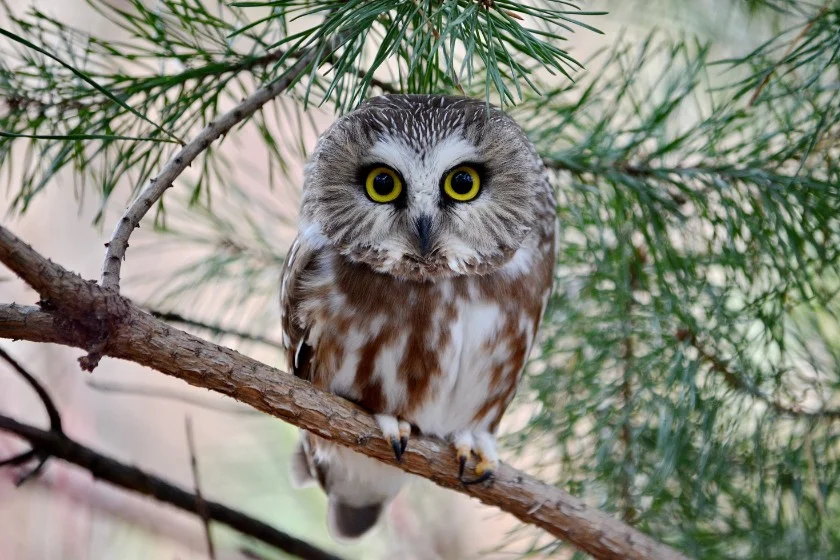
- Length: 7 to 9 inches
- Weight: 2 to 5 pounds
- Wingspan: 17 to 22 inches
- Scientific name: Aegolius acadius
The northern saw-whet owl is a native of North America, and it is a small bird. It is considered one of the smallest birds in its range.
In Illinois, the northern saw-whet owl usually comes during the winter period. It is generally common in North America, though because of its size and nocturnal behavior, it is rarely seen.
The northern saw-whet owl can best be discovered by its sound, from which it got its name. It is a tooting sound often described as a saw being sharpened by a whetstone.
It vocalizes year-round but increases more during the breeding season. It has a couple of others sounds, like whining and squeaks.
Though it is tiny, this bird hunts. It feeds mainly on small mammals, especially rodents. Besides those, it also feeds on small birds like swallows, sparrows, and kinglets.
6. Snowy Owl
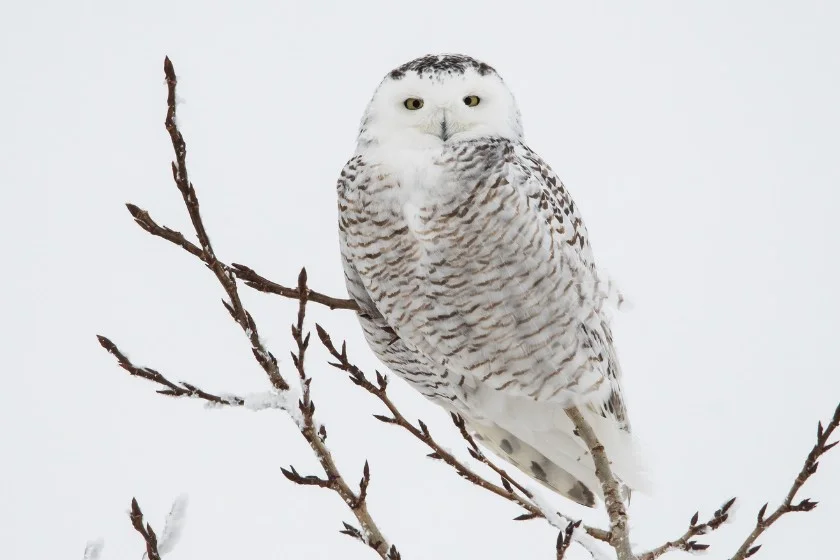
- Length: 21 to 28 inches
- Weight: 56 to 104 pounds
- Wingspan: 50 to 57 inches
- Scientific name: Bubo scandiacus
The snowy owl is a large bird that stays in the arctic tundra. It migrates to different states in the US in different periods.
You’d find the snowy owl in northern Illinois during the winter period. It is also called the white owl, the polar owl, and the Artic owl. It is considered one of the largest owl species.
You can’t miss the snowy owl when you see one. Besides the size, it is the only owl species that are majorly white.
Males tend to be whiter than females, and older ones are more than young ones. However, only a few individuals are completely white.
These birds tend to have spots on the plumage. It also has bright yellow eyes.
Snowy owls are active both during the day and at night. It can also hunt at any time except during the strong winter. It feeds largely on small mammals, but it can feast on birds as well.
7. Long-eared Owl

- Length: 14 to 16 inches
- Weight: 8 to 15 pounds
- Wingspan: 35 to 39 inches
- Scientific name: Asio otus
The long-eared owl has a wide breeding range, going from Europe to North America. It is also called the northern long-eared owl, lesser horned owl, or cat owl.
It is often found in open habitats, and that’s the best place you can find it in Illinois. It’s more common in winter as it has a non-breeding range in the state.
The long-eared owl is easily distinguished by the visible ear tufts, which stand out much like those of the great-horned owl.
The ears are just one part of its physical features, though. It also has long wings, a slim figure, and a brownish or gray color. It is medium-sized, with the female being larger than the male.
The long-eared owl is nocturnal, its activity commencing at dusk. It often hunts during this period, also relying on its ears, much like other nocturnal birds. It feeds mainly on mice, though it can supplement with other meals.
8. Short-eared Owl
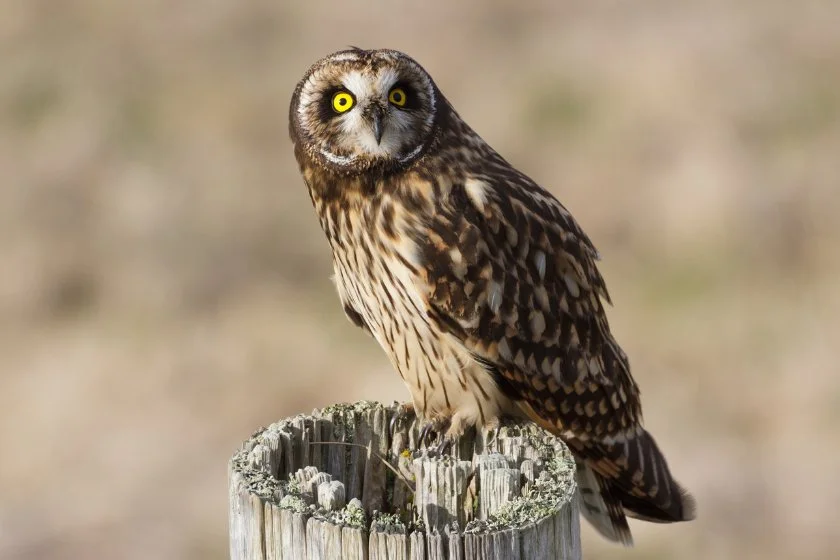
- Length: 13 to 17 inches
- Weight: 7 to 17 pounds
- Wingspan: 34 to 41 inches
- Scientific name: Asio flammeus
The short-eared owl is a relative of the long-eared, both belonging to the same genus. As its name implies, its ear tufts are short and almost seem non-existent.
It occurs on all continents except Antarctica and Australia, making it a very widespread owl. In Illinois, it is found year-round but specifically on the northern side. It inhabits open fields and airports.
Besides having a short ear tuft, this creature also comes with a big head, short neck, large eyes, and a pair of broad wings.
Additional traits include a short, black bill, a barred tail, and brown plumage. Its call is a bark often described as raspy. It sounds like a waouk-waouk-waouk or a toot-toot-toot.
The short-eared owl mainly hunts at night, but it is also both diurnal and crepuscular. It feeds mainly on rodents, as well as other small mammals like bats. Insects act as supplements.
9. Burrowing Owl

- Length: 7 to 11 inches
- Weight: 5 to 9 pounds
- Wingspan: 20 to 24 inches
- Scientific name: Athene cunicularia
The burrowing owl is a native of North and South America. It immediately distinguishes itself from other species with its long legs and living space.
Just as the name implies, this bird lives in burrows rather than nests. It doesn’t dig these burrows but rather uses one left by other animals like the prairie dogs.
In Illinois, you’d probably find it in an open habitat where it can easily spot a burrow.
Besides the long legs, the burrowing owl has bright eyes with a yellow or gray beak and a flat facial disc. Its overall colors are brown on the head and white spots on the wings.
The burrowing owl is diurnal, often hunting during the day. Its preferred method of hunting is to perch, wait for prey, then swoop down on the unsuspecting victim. The diet comprises majorly of small rodents and large insects.
10. Northern Hawk Owl
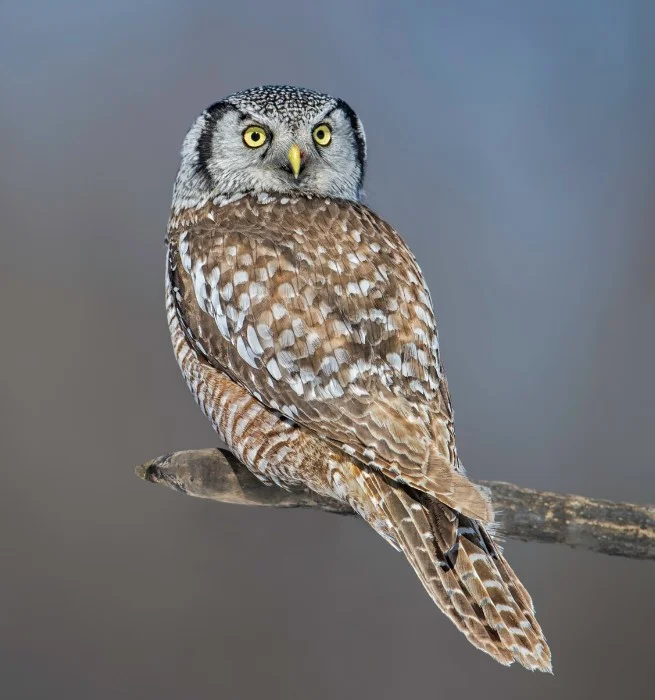
- Length: 14 to 18 inches
- Weight: 8 to 16 pounds
- Wingspan: 28 inches
- Scientific name: Surnia ulula
The Northern hawk owl is so named because of its close resemblance with the hawk in appearance as well as behavior. Not only does it look like a hawk, but it also hunts like one.
This bird can be found in North America as well as in some other places like Europe. In Illinois, it stays in the northern parts, though it is rare.
This bird can be described as having dark brown plumage with white spots. It also comes with a long tail, flat head, yellow eyes, and a yellow curved beak.
They have different vocal calls for specific situations. When seeking a mate, the male lets out an ululululululul whistle.
The northern hawk owl is more active during the day when it hunts for the next meal. It goes after rodents, birds, and a host of other small mammals.2
11. Boreal Owl
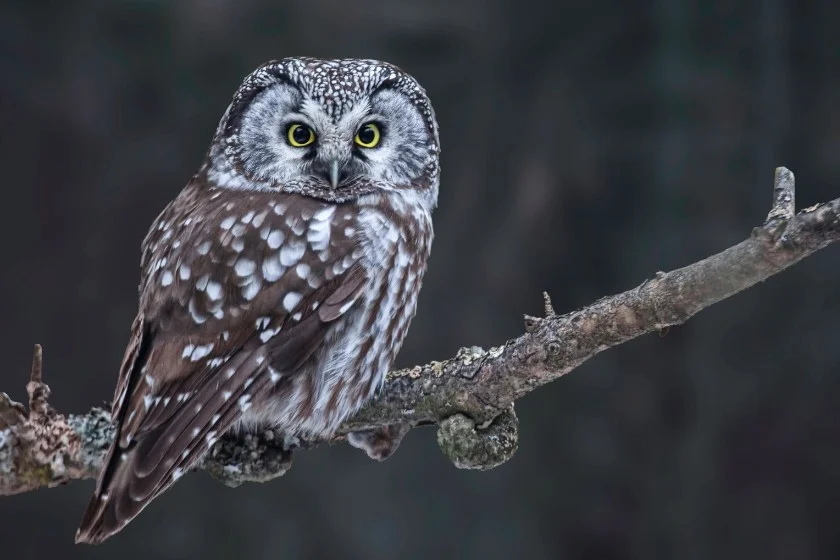
- Length: 8 to 11 inches
- Weight: 3 to 8 pounds
- Wingspan: 22 to 24 inches
- Scientific name: Aegolius funereus
The final bird on our list is the boreal owl, also known as the Tengmalm’s owl. It can be found in North America and Europe.
This bird is rarely seen by humans because of its shyness and nocturnal habits. In Illinois, it appears during winter but can be hard to find due to the already mentioned reasons.
As with every other shy owl species, the best way to find the boreal owl is with its sound. It makes a series of toots that’s loud enough to be heard at night.
Though it is shy and elusive towards humans, the boreal owl is still a full hunter. It goes after animals like small mammals like voles and insects. It can also feed on amphibians.
Conclusion
With a total number of 11 species of owls in Illinois, you have a good chance of seeing them when you go owling.
Simply do your full research on the species you want to see and ensure you respect its space.
Next up…
- Owls In Wisconsin
- Owls In Missouri
- Owls In Indiana
- Owls In Michigan
- Owls In Wisconsin
- Most Dangerous Animals In Missouri
- Most Dangerous Animals In Indiana
- Most Dangerous Animals In Michigan
References & Notes
Facts Sources:
- Great Horned Owl. The Peregrine Fund.
- Geggel N. 2022. Are All Owls Actually Night Owls? Live Science.
